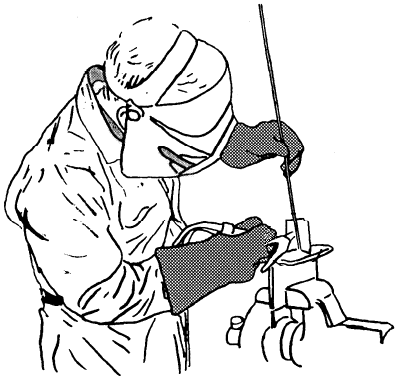Introduction to welding technology
Welding is a manufacturing process used to join materials, usually metals or thermoplastics. During Welding, the parts to be joined (the workpieces) are melted on the joining surface and a filler material is usually added to form a melt pool of molten material (the weld pool) that solidifies into a strong joint.

In Soldering and Brazing, on the other hand, the workpiece is not melted, but a material with a lower melting point is melted between the workpieces to bond them together.
Types of welding
There are many different types of welding processes and in general they can be categorized as..
Arc welding: A welding power source is used to create and maintain an electric arc between an electrode and the base material to melt metals at the welding point. In such welding processes, the power supply may be alternating or direct current, the electrode may consumable or non-consumable, and filler material may or may not be used.
The most common types of arc welding are..
Shielded Metal Arc Welding (SMAW): A process in which a clad coated electrode is used to lay the weld. As the electrode melts, the (flux) coating disintegrates and releases shielding gases that protect the weld area from atmospheric gases and provides molten slag that coats the filler metal as it moves from the electrode to the weld pool. Once part of the weld pool, the slag floats to the surface and protects the weld from contamination during solidification. Once hardened, the slag must be chipped away to reveal the finished weld.
Gas Metal Arc Welding (GMAW): A process in which a continuous and consumable wire electrode and a shielding gas (usually an argon and carbon dioxide mixture) are fed through a welding gun.
Gas Tungsten Arc Welding (GTAW): A process that uses a tungsten electrode and is used to create the weld. The weld area is protected from atmospheric contamination by a shielding gas, and usually a filler metal is used that is fed manually.
Gas welding: In this method, a focused, high-temperature flame generated by gas combustion is used to fuse workpieces (and filler material) together. The most is oxyfuel welding in which acetylene is burned in oxygen.
Resistance welding: In resistance welding, heat is generated by passing a high current (1000-100,000 A) through the resistance caused by the contact between two or more metal surfaces, forming pools of molten metal in the weld area. The most common types of resistance welding are spot welding (with spot-shaped electrodes) and seam welding (with wheel-shaped electrodes).
Energy Beam Welding: In this method, a focused high-energy beam (laser beam or electron beam) is used to fuse the workpieces together.
Solid-state welding: Unlike other welding methods, solid-phase welding processes involve no melting of the materials to be joined. Common types of solid-state welding include ultrasonic welding, explosion welding, electromagnetic pulse welding, roller welding, friction welding (including friction stir welding), etc.
Welding terminology
There is a special technical vocabulary (or language) used in welding. The basic welding language terms are..
Filler material: When welding two pieces of metal together, we often need to leave space between the joint. The material that is added to fill this space during the welding process is known as the filler material (or filler metal).
Welding rod: The term welding rod refers to a form of filler metal that does not conduct electric current during the welding process. The sole purpose of a welding rod is to deliver filler metal to the joint. This type of filler metal is often used for oxyfuel welding.
Electrode: In electric arc welding, the term electrode refers to the part that conducts the current from the electrode holder to the metal being welded. Electrodes are classified into two groups: consumable and non-consumable.
- Consumable electrodes not only transmit current but also supply filler metal for the weld seam. An example is the electrode used in arc welding with shielded metal.
- Non-consumable electrodes are used only as conductors for the electric current, as in gas wire arc welding. The filler metal for arc welding is a hand-fed welding wire.
Flux: Before any welding process is performed, the base metal must be cleaned of impurities such as oxides (rust). Failure to remove these oxides through the use of flux can result in a poor weld. The term flux refers to a material used to dissolve oxides and release trapped gases and slag (impurities) from the base metal so that the filler metal and base metal can be fused together. Fluxes come in the form of a paste, powder or liquid. There are different types of fluxes available and the choice of the right flux is usually based on the type of welding and the type the base metal.
